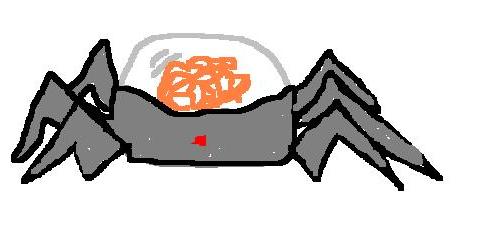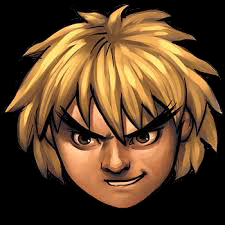At work we somehow landed on the topic of how many holes a human has, which then evolved into a heated discussion on the classic question of how many holes does a straw have.
I think it’s two, but some people are convinced that it’s one, which I just don’t understand. What are your thoughts?
Define a “hole”.
The answer depends on the context. Topologically, it’s one. I personally like zero. If I say “There’s a hole in my straw!” You’ll not think all straws have holes. You’ll think there’s something wrong with it.
A cup is essentially a self-contained hole that we pour stuff in, but if I say there’s a hole in my cup you’d know what I meant
From a topology perspective, a cup does not have a hole. A mug does, but its the hole that the handle makes, not the area containing liquid.
I see a lot of folks referencing topology, but clearly topology is not a particularly good go-to for how to talk about holes.
-
From a topological perspective, a hole in the ground isn’t a hole… But you can still fall into it.
-
From a topological perspective, a hole in your logic isn’t a hole – but you can still have one.
Clearly we’re talking linguistically, not topologically.
-
To be fair, I think shirts already have holes, but if I said “there’s a hole in my shirt” you’d think there was an EXTRA hole
If you say “There’s a hole in my straw” I think it’s always implied you’re talking about an unexpected hole. You can also say “There’s a hole in my sweater/pasta strainer/etc” and people would get you’re talking about a hole that is not supposed to be there. Straws are the same. They have one hole and you’d be unhappy if another appeared.
How many holes does a rubber band have? A donut?
Topologically a rubber band, a donut, and a straw have the same number of holes. The hole at either end of the straw is just a continuation of the same one hole.
I disagree. A rubber band and a donut do not have an ‘in’ and ‘out’.
Stick your finger through a donut, does it go in one side and out the other?
A straw’s “in” and “out” are completely arbitrary. You can flip a straw either way and it’d still work.
Anything with a hole through it that isn’t perfectly 2D could have a “in” and “out” side. Your rubber band your doughnut only don’t have one because nobody ever thought to define one.
By that argument your mouth is a continuation of your asshole… No offense.
I mean… yeah
Some people haven’t realized almost all animals are just tubes with various fancy shit glued on.
Edit: including humans
Or put biologically, virtually all fauna are just various advanced forms of flatworm.
I guess we all are talking out of our asses, then…
Indeed, and when you kiss someone you are making one big hole connected by two assholes.
Anal 69s just make one big reverse-donut
Anal 69s just make one big reverse-donut
Take that cylinder and stretch it until it’s a cube with two square cutouts in it. Stretch in some of the inner walls. Now you have a house, with a door and a window. Now: does the house have two holes - a door and a window - or does it have one hole?
None of them have holes, usually. A hole goes from the outside of a volume to the inside. Those are all intact tori.
Well, depends what you call a hole. Does a glass have a hole? Does a bottle have a hole?
If you said no to both, you mean a topological hole and a straw has one.
If you said yes to one or both of them, you mean a tight opening in which someting can be inserted (yes yes, innuendo). How tight an opening must be to be a hole is arbitrary and subjective, it depends on the person. In this case a straw has two holes.
Mathematically It’s one. Think of a disk, like a CD, does it have one hole or two? One, right? Now imagine you can make it thicker, I.e. increase the height, and then reduce the outer radius… Making it progressively more straw-like. At what point does it stop having 1 hole and begin to have 2?
Topologically they’re the same shape.
I’m sure Matt Parker has a video on this topic in YouTube. Here
If I dig a hole, how many holes is it?
Holes in the hole? 0
Holes in the top layer of the ground? 1
Zero unless you reach Australia
How far are you zooming in? I’d say there are basically infinite holes if you look at it at an atomic scale
as vsauce said “At small enough scales, ‘How many holes does [an object] have?’ becomes a meaningless question. Ultimately, [the object] isn’t a solid thing that could even have holes. It’s just a loose constellation of atoms and molecules.”
A regular straw has zero holes. The central cavity, through which beverages flow, is not part of the straw, and hence it’s endpoints are not holes in the straw.
by that logic, holes do not exist. holes are by definition not part of the material.
But they are (edit: holes are) present where you’d expect the material of the object. No one expects a straw to be a solid cylinder, ergo, the central cavity is not a hole.
I see, so like, if it identifies as a hole it’s not a hole? So a cheese grater has no holes. But if I jam a screwdriver through the cheese grater, now it has a hole? What if I like the new hole and want to consider it a part of the cheese grater? Do we hold a vote on which hole identifies as a property of the object? Or do objects self-identify? I don’t speak cheese grater, this is going to get difficult.
That’s not how it works. It’s pretty unanimously understood that a donut has a hole, yet nobody expects material to be there, even though there are donuts without holes.
There are no straws without a hole. A straw without a hole is a stick. The hole is an integral part of the straw.
A straw is topologically the same as a donut. It absolutely has one hole.
Just realized humans are topological donuts
You guys are all getting down voted and this misses out on the pure entertainment value of these comments
Thought so, donut.
If Gordon Ramsey were a cartographer…
Dude your mom’s a topological donut
Almost. First you need to choose the minimum size of a hole. If you define a hole as something just a bit larger than skin pores, a human has 7 holes. Even when defining a hole as something around 1cm, you have at least 3 holes (your nostrils, mouth and anus share one cavity).
Its one
A hole is an opening on (something), and a TUNNEL is an end that leads to a hole that leads to another hole and to another end. Therefore, it has zero holes, but one (very small) tunnel.
A tunnel is also just a hole. A long tunnel is clearly a tunnel (through a mountain, for instance).
How short does the tunnel need to be, to no longer be called a tunnel?
20 meters is a tunnel.
5 meters is a passage.
1 meter is an arch.
5 centimeters is more like a doorframe?
5 millimeters is definitely a hole.
0.1 millimeter is a hole (like in a paper in a binder).A tunnel is also just a hole.
That is like saying that the sky is just a bunch of colors. Or that an orange is a football. What you are missing here that most things can be COMPOSED (!) of (various) other things…
…unless you will reply with this with something like “That’s right! We are just a ball of flesh!”. Then eh… *shrug
Your definition list was on point tho, I give you that.
This is interesting, Gustavo. Let’s try something: take a block of wood and drill a hole through it, then place it on a table.
One could say, what is this, a tunnel for ants? They might be correct.
Make the hole much larger, and one could say, what is this, a tunnel for model trains? They might be correct.
I still say that a tunnel is one hole, not two, and not made of other completely different things. It also aligns with the donut explanation given in other responses. I disagree with you on the human meat balls, that is conflating two very different things.
I’d like to know your two-hole arguments please?
I’m more interested in humans. Is the mouth and anus two holes or one?
on average, seven. vsauce has a video on this
- A straw is a continuous surface without any holes.
this the best answer
One
one hole is going through the straw
No it’s two holes
Relevant background music for your pondering. Fitting background music while you ponder
To settle this argument could you clarify if we’re supposed to be considering the straw as a solid 3D object with a thickness, or as a curved 2D surface? The answer kind of depends on which you pick.















